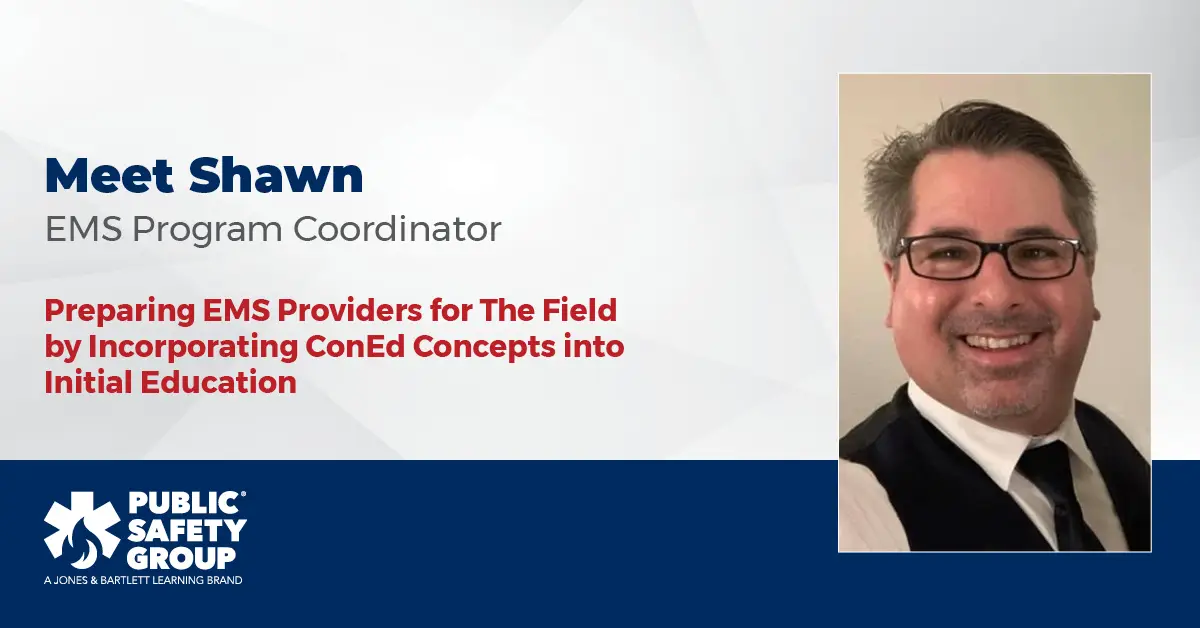How to Use NAEMT's AMLS and PHTLS Programs to Prepare EMS Providers for the Field

Can NAEMT's AMLS and PHTLS programs be used in both EMS initial education and continuing education? According to Shawn Tatham, EMS and Fire Science Program Coordinator for Wiregrass Georgia Technical College, introducing the continuing education concepts from AMLS and PHTLS into his initial education courses has helped better prepare his providers for the field.
Wiregrass Georgia Technical College is a public community college located in South Georgia. It is part of the Technical College System of Georgia that provides education for an 11-county service area with campuses located in Valdosta, Fitzgerald, Douglas, and Adel. Shawn Tatham instructs EMS and Paramedic classes, while also coordinating the curriculum for both the EMS and Fire Science programs.
The Public Safety Group (PSG) had the chance to speak with Tatham about his experience using the Advanced Medical Life Support (AMLS) and Prehospital Trauma Life Support (PHTLS) courses, both of which are offered by the National Association of Emergency Medical Technicians (NAEMT), in their line of initial and continuing education programs:

What led you to considering using AMLS and PHTLS for your training?
For AMLS, we started using it when I was the Training Coordinator for Pinellas County EMS Training. I liked the program when we used it there, so it was an easy transition since it was already there at Wiregrass. As for PHTLS, I used to be a coordinator with ITLS, but we looked into PHTLS and found it a bit broader in scope. I felt it provided a really good background of knowledge along with flexibility. The training felt continuous and not a “one and done” type deal, and it works well for both initial education and continuing education. With how often the information is updated, I felt like it always had the best and latest information for EMS education, which led to us using PHTLS.
What do you like about AMLS?
The biggest selling point for me is the AMLS Assessment Pathway. I think it’s a great tool for teaching both new and current EMTs and paramedics. The Assessment Pathway is very organized and provides great guidance for clinical decision making. Beyond that, the material covers some advanced concepts, especially for continuing education, that helps providers increase their knowledge and clinical acumen so they can be prepared to assess and manage medical conditions with accuracy.
What do you like about PHTLS?
It has a lot of the same strengths that I mentioned for AMLS, although there are some changes in terminology between the two programs. However, this can make it easy to distinguish which program you’re talking about in discussion, and the differences aren’t very significant, so it’s not a big issue. Overall, I feel PHTLS provides a good pathway to physiology and kinematics of trauma, the latter of which is one of the most important chapters in the PHTLS book, in my opinion. It really puts critical thinking at the forefront of how students manage patient trauma. While experience is key in providing good care, it can create a bad bias when it comes to trauma. For example, a 75-year-old and 45-year-old might experience similar injuries in a car crash, but internally, the patients don’t react to trauma the same way. PHTLS helps students think critically so they are prepared to address common medical conditions, while also accounting for the difference between how patients of different backgrounds react to trauma.
Most people think of AMLS and PHTLS as programs for continuing education, but you also use them for initial education. Why do you think they’re beneficial for use in initial training?
We pair the NAEMT PHTLS and AMLS material with the PSG Paramedic curriculum, and we feel the material lines up well with those courses, especially PHTLS. The material introduces similar concepts and philosophies that align well and don’t confuse the student. Using them together helps enhance initial education and introduces concepts to students that some won’t really dive into until they begin their continuing education programs. It’s a good way to create more well-rounded providers before they enter the job market.
Do your students receive NAEMT course completion certificates for PHTLS and AMLS? Why do you think this is valuable?
Yes, the students get AMLS and PHTLS certification as part of the medical and trauma portion of the class. One of our main goals is to have students “workforce ready” when they enter the field. With limited class time, it’s beneficial for students to enter the field with certification, as opposed to having to get it after they start their careers. This helps make them more attractive to employers and the community.
Any closing words you’d like to share with people considering using AMLS or PHTLS for their training?
With AMLS, the Pathway really provides a great structure and modality to use for assessing and managing medical conditions. PHTLS vibes well with what students are learning in most textbooks; it lines up with our standard curriculum, so it doesn’t cause students to learn two types of trauma philosophies. They’re both great programs and being able to go to PSG as a one-stop vendor for both is awesome.
Learn more about AMLS and PHTLS today.
For more information about how the Public Safety Group can help you reach your unique training goals with AMLS, Third Edition, and PHTLS, Ninth Edition, please contact your dedicated representative.